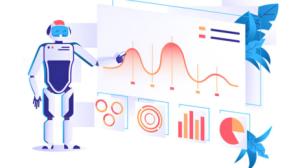Increasing viewership is vital in the digital era. A view bot artificially inflates views on videos, giving them a higher perceived popularity.
Usually, they are used on YouTube and other platforms and alter metrics, which would impact organic growth and ad performance.
Let’s delve into how they work, their effects, and related consequences for advertisers and creators.
What is a View Bot?
A view bot is software that can mimic user behavior. The artificial views trick algorithms into believing that there is real engagement.
This technology is often utilized for the purpose of increasing visibility, monetization opportunities, or social proof. The artificial methods, however, undermine authentic audience interaction.
How Does a View Bot Work?
It works in the following ways:
- Automated Software: Bots are programmed to view videos repeatedly.
- Proxy Usage: Proxies mimic real IP addresses, masking bot activity.
- Scripted Behavior: They interact in patterns replicating human viewers.
- Control Panels: Users customize speed, quantity, and intervals.
- Algorithm Manipulation: Fake views influence trending and suggestion feeds.
Impact of View Bots on Ads

Using a view bot looks good in the short run but has drastic drawbacks. It may initially inflate some metrics, though it ruins credibility and destroys trust altogether.
These devastating effects permeate content producers, advertisers, and websites, ruining their ability to eventually achieve a sustainable growth curve that leads them to success.
- Wastage of Budget
One of the major negative impacts of using a View Bot is the significant wastage of the advertising budget. Since advertisements are being shown to fake accounts that are created by bots, money is being spent without any meaningful outcome.
These fake views do not convert into any purchase or actual engagement and severely impact the campaign’s effectiveness. Over time, this misuse of funds lowers the credibility of the advertiser’s strategies.
Additionally, the absence of actionable data from these campaigns hampers the ability to refine future marketing efforts, further diminishing ROI and leaving brands with little to show for their investment.
- Misleading Metrics
View Bots artificially inflate video metrics, rendering analytics unreliable and misleading advertisers. Metrics such as views, watch time, and engagement are critical measures to assess campaign performance.
If these numbers are manipulated, advertisers are deceived into thinking their strategies are working when they are not.
Such flawed data skews future decision-making, making it almost impossible to develop effective marketing strategies. Misleading metrics damage advertisers’ confidence in their campaigns.
They also harm the creator’s reputation, as stakeholders doubt the authenticity of performance reporting. This loss of trust negatively affects long-term partnerships and opportunities.
- Account Penalties
Major platforms such as YouTube strictly do not allow the use of bots. Creators who are found using them face severe consequences.
Suspension, demonetization, or even a permanent ban can be the outcome that results in huge monetary loss. However, the financial blow is but one aspect of the damage.
The reputation of the creator is also harmed and can be long-lasting when audiences and collaborators perceive the channel as dishonest. So are the advertisers associated with these creators, whose campaigns are also seen as complicit in these unethical practices.
This two-pronged attack, in terms of financial and reputational damage, makes recovery from bot-related penalties very difficult to achieve.
- Loss of Trust

View Bots seriously erode the trust that ties advertisers and content creators together. Advertisers are interested in working with creators who have organic audiences because organic engagement is directly associated with measurable and meaningful results.
The moment a creator’s dependence on bots is exposed, skepticism about their credibility grows, and their image becomes tainted. This erosion of trust impacts future collaborations since advertisers are less likely to invest in partnerships with questionable authenticity.
Lost trust also bleeds into audiences, who are cheated, resulting in lower support for the creator’s content and further diminishing their growth potential.
- Loss of Integrity to the Platform
Extreme botting severely affects the general integrity of platforms like YouTube, which operate on the principle of promoting quality content.
Fake views manipulate algorithms so that deserving content creators appear less, rendering genuine pieces of content non-visible where they deserve the most views.
For an advertiser, this distortion weakens quality ad placements as campaigns are, therefore, not as effective with reduced willingness to invest in it. Users experience decreased credibility in the recommended pieces. They lose trust in the content suggested by the platform.
As a result, they receive poorer-quality content influenced by bot activity. This degradation of integrity affects all parties in the ecosystem-from creators to audiences to advertisers.
- Viewer Bots and Their Role in Fraud
Click fraud highly contributes to viewer bots as it artificially inflates video metrics such as views, likes, and comments, which gives a distorted sense of popularity. They are able to mimic user behavior but deceive the algorithms into recommending low-quality or irrelevant content as valuable.
This manipulation leads to fake engagement data, breaking the trust of advertisers regarding their campaigns and causing unfruitful ad budgets targeting nonexistent audiences, hence resulting in bad ROI.
Platforms like YouTube face reputational risks, as bot-driven content undermines their credibility, damages user trust, and affects platform reliability and advertiser confidence.
This endangers the integrity of the platform and makes it less attractive for both advertisers and creators. A collaborative effort to prevent such manipulation is necessary for the sustainability of authentic and reliable digital sources.
Conclusion
This results in a false sense of popularity artificially inflated by A View Bot, but it really hurts trust, genuine engagement, and ROI for the advertiser. Good practices on these platforms ensure sustainable growth for both advertisers and creators. They help maintain transparency and credibility within the ecosystem.
By resisting unethical tactics, businesses and content creators can build a reputation that stands the test of time.
FAQs
What are Viewer Bots and How Do They Work?
Viewer bots are automated software programs designed to mimic human activity online. They inflate video metrics, such as views, likes, and comments, by repeatedly engaging with content. They often use proxies to appear as real users and can manipulate algorithms to promote low-quality content.
Why Are Viewer Bots Bad for Advertisers?
Viewer bots trick advertisers into believing they are getting real engagement when, in fact, the metrics are all fake. This means wasted budgets, poor ROI, and unreliable data that make future marketing strategies untrustworthy. Advertisers lose trust in platforms that rely on bot-driven content.
What Are the Implications for Creators Using Viewer Bots?
Viewers using viewer bots risk suspension of their accounts, demonetization, or permanent bans from platforms such as YouTube. These penalties damage their revenue and reputation, which makes it difficult to attract advertisers and maintain audience trust.
How Do Viewer Bots Affect Platform Integrity?
Excessive bot activity erodes the credibility of platforms. Algorithms are gamed, allowing for low-quality content to proliferate while burying legitimate creators. This negatively impacts user experience, advertiser confidence, and overall platform reliability.
What are the solutions to combat viewer bots?
Advanced AI and machine learning systems, stricter policies, and educational initiatives are employed to detect and eliminate viewer bots. Collaboration between advertisers and platforms can foster transparency and preserve integrity.
View Bot View Bot Youtube Viewbotting Viewbotting Service
Last modified: December 27, 2024


